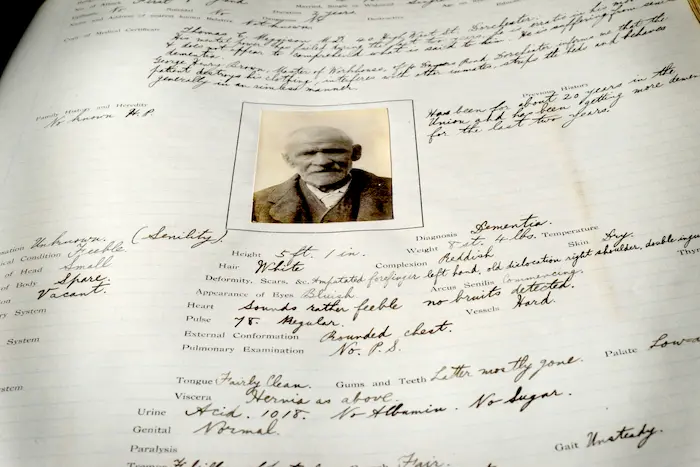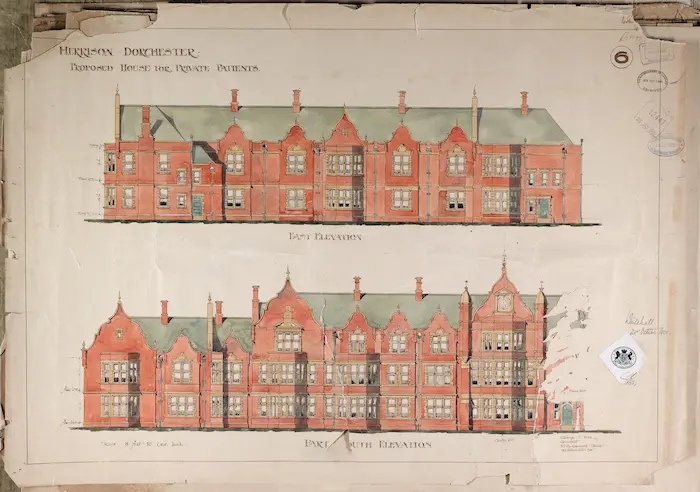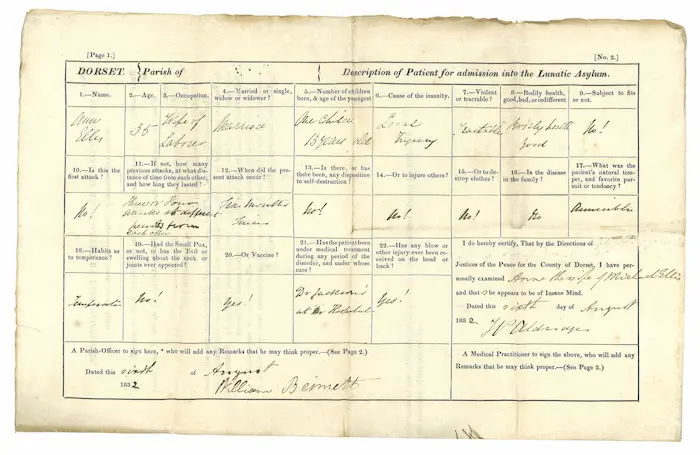History of Herrison Hospital
The first Dorset County Asylum opened at Forston House in August 1832, and by 1843 there were 113 patients. At that time two Justices of the Peace had to certify that someone was either a "lunatic, insane or a dangerous idiot" before they were admitted. Forston House became too small for its purpose and a site at Herrison was bought in 1860, and a new asylum opened there in 1863 with 300 beds. The Forston site remained open, however, and did not close until 1895.
Building at Herrison continued, and by 1884 there were 58 employees looking after 472 patients. Patient numbers increased, and in 1887 over crowding resulted in some patients being transferred to near-by workhouses. In 1895 electricity and heating were introduced, and a church that could seat 400 people was built. 1904 saw the opening of Herrison House for private patients and by 1913 there were 957 patients in total at Herrison Hospital.
By 1932 Herrison had become a self-supporting community with its own farm (which closed in 1976), laundry, ball room, cinema, operating theatre and dental room. In 1938 a nurse's home was built for 95 female staff. Patient numbers increased during the Second World War, while staff levels dropped due to conscription. 1948 saw the introduction of the National Health Service and Herrison, like other Victorian institutions, was nationalised. During the 1950s modernisation took place, in both treatment of patients and in building.
Visits by officials during the early 1960s drew positive comments as to the care and treatment of the patients. By the late 1960s overcrowding and management issues resulted in reorganisation. The 1970s saw efforts to help patients move back into mainstream society, and by 1979 there were 200 long stay patients left at Herrison. The 1980s saw increased community-based care and in 1986 Herrison House closed to patient care. The building housed the headquarters of West Dorset Health Authority. The hospital finally closed in 1992.
The archive collection
The collection came to the Dorset History Centre between the years of 1986-1991 and small accessions are still being taken in today. Thanks to a Welcome Trust grant in 2019 we have been able to catalogue and conserve the collection and a full catalogue is now available online. As part of the project we have also worked with volunteers on an index of all pauper patients, parts of this index can be viewed by the public on request. The collection contains over 300 boxes of materials. These include:
- order papers: the documents issued by the magistrate which certified the patient as mentally ill and committed them to the asylum; give details of the nature and cause of the patient's condition
- admissions registers, patient registers or general registers: these indicate when the patient arrived, what type of patient they were (private or pauper etc) and other basic information
- discharge, removals, transfers and/or deaths registers: these indicate the eventual fate of a patient - whether they recovered, were transferred, or died at Herrison. May also give some case history
- medical journals or case books: these records chart the progress of the patient's condition, with observations by the medical staff
Restricted access
Patient records are under restricted access for 100 years. There are also other records relating to the staff, the buildings and the administration of the institution.
Because much of this collection is under restricted access, and because it is not fully catalogued, it is important that you contact us in advance if you wish to use these records.
If you would like to find information about a patient who was at Herrison within the last 100 years please see our guidance for accessing hospital records. This is to ensure compliance with the Data Protection Act.



